Here are 9 best oils to season cast iron skillet. Cast iron pans are a great asset to any serious kitchen. If you take care of your cast iron, it will last for years. It might even outlast you! It’s vital that you properly season your cast iron before using it, and occasionally re-season it over the years.
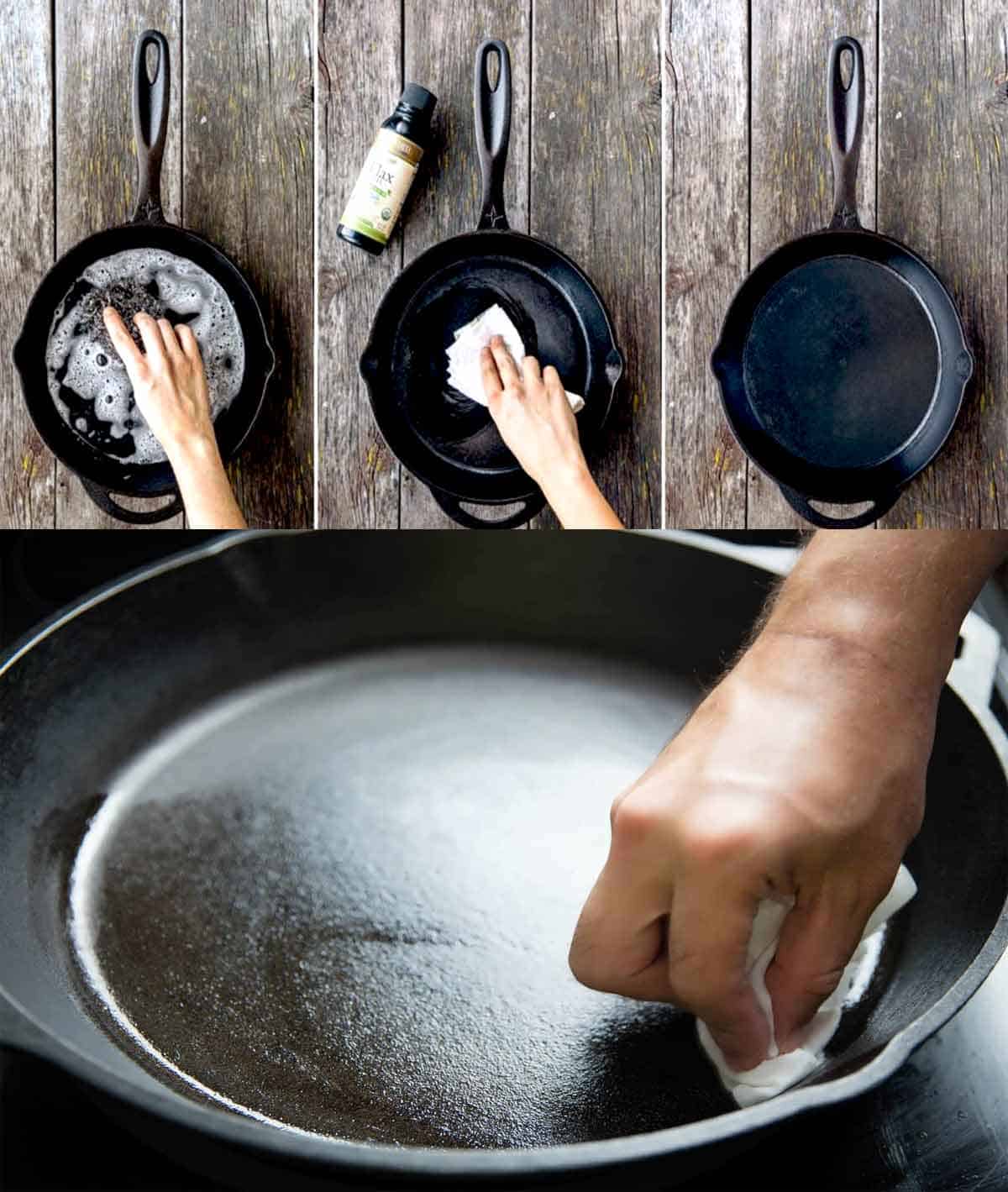
What’s the best oil for seasoning cast iron? If you ask us, grapeseed oil, with its high smoke point, is best. Your choice of seasoning oil depends on the level of heat you typically cook with as well as your own preferred flavors.
The best grapeseed oil for seasoning a cast iron pan is this one, from La Tourangelle.
However, you can check out the best nine oils for seasoning a cast iron pan below. We’ve hand-picked the 9 best oils, what they’re best for, and any drawbacks they might have.
The Best Way To Season Your Cast Iron Pan
Seasoning your pan depends a lot on the pan you have. It’s always best to consult the manufacturer’s instructions before seasoning to make sure that you’re going about things the right way.
There are, however, some general tips that you can follow.
- Fry fatty meats and roast vegetables in oil frequently for the first uses of your pan
- Don’t cook anything delicate - like eggs or fish - until you’ve used the pan at least ten times, if not more
- Don’t use highly acidic ingredients like vinegar or lemon juice
- DO NOT use harsh detergent on your seasoned pan! This will damage your seasoning. Use a light soap if you’ve used highly aromatic ingredients.
- NEVER leave a cast iron pan to soak
- Dry your pan thoroughly after washing. You can add a tiny amount of oil after drying but this isn’t always necessary.
Reseasoning Cast Iron
As indicated above, be sure to clean and dry your cast iron pan after every use. Your food won’t stick to cast iron the way it will stick to steel, and a cloth and hot water will be enough to remove any food.
Ensure that your cast iron pan is completely dry after cleaning. One way to do that is, after drying, warm it up on a hot stove to evaporate any microscopic droplets of water.
If you leave water in your pan it will rust!
Be sure to warm up oil in your pan before use each time to keep it lubricated and seasoned.
Like your car, or a musical instrument, frequent use keeps your cast iron pan in top shape.
The 9 Best Oils for Seasoning Cast Iron
You should only season a new cast iron pan, or if you don’t like the food or cooking experience with your current pan.
You can take a look at the handy list below to see which seasoning oil is best for you!
Each has its own benefits and drawbacks, so take a look and determine which suits your needs.
| Brand | Smoke Point | Type of Oil | |
| La Tourangelle Grapeseed Oil | 420F| 215C | Grapeseed Oil | |
| Barlean’s Fresh Organic Flax Oil | 225F| 107 C | Flaxseed Oil | |
| BetterBody Foods 100% Pure Avocado Oil | 520F| 271 C | Avocado Oil | |
| Happy Belly Vegetable Oil | 425 –450F| 218-232C | Vegetable Oil | |
| Pompeian Robust Extra Virgin Olive Oil | 375F| 190C | Extra Virgin Olive Oil | |
| Tenderflake Pure Bakers Lard | 370F|187C | Lard or Tallow | |
| Nutiva Organic Cold-Pressed Virgin Coconut Oil | 350F|176C | Coconut Oil | |
| Happy Belly Peanut Oil | 450F| 232C | Peanut Oil | |
| Original Grass-Fed Ghee by 4th & Heart | 300F / 475F| 148C/246C | Butter or Ghee |
1.Grapeseed Oil

Try La Tourangelle Grapeseed Oil
This is one of the most popular choices, and our recommendation. Grapeseed oil has a high smoke point, so it will handle extremely high temperatures with ease. You’ll quickly bond oil and pan with this one!
Grapeseed oil also lacks a potent aroma or flavor, so it won’t impact the taste of your cooking. Perfect for those who want a neutral flavor to their cast iron pan. Grapeseed oil is reasonably priced and a healthier oil, too!
2.Flaxseed Oil
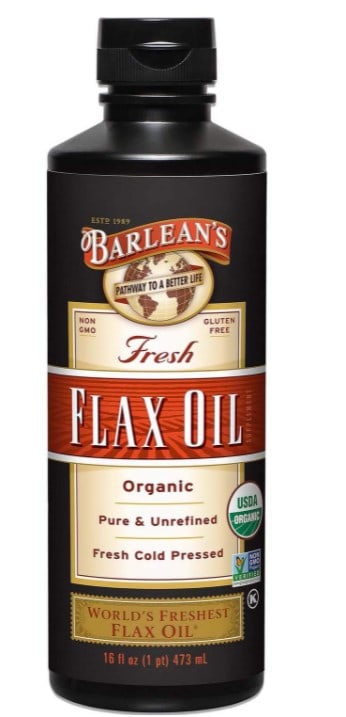
Try Barlean’s Fresh Organic Flax Oil
Flaxseed oil has a lot smoke point. You cannot season it at high temperatures. To address this, we recommend seasoning at a low temperature at least six times, for an hour at a time, with a temperature of 225 degrees Farenheit.
Flaxseed oil is a little more expensive than grapeseed oil, and has a distinctive odor.
It will, however, bond with your iron with ease, and provide a slick, slippery coating to prevent food from sticking. What’s more, flaxseed oil dries naturally, great for moisture-sensitive cast iron.
If you choose to use flaxseed oil to season your pan, make sure you use 100% flaxseed oil. Impurities in the oil will affect the smoke point and the bond it makes with your iron, resulting in poor seasoning.
Flaxseed oil is best to season pans that will see frequent, regular use. If ignored, it will spoil, and give your pan a strong, oily smell.
3.Avocado Oil
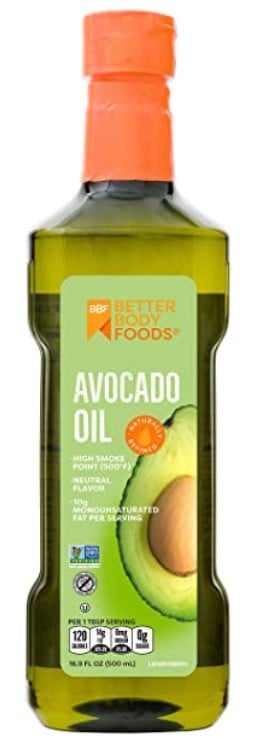
We Recommend BetterBody Foods 100% Pure Avocado Oil
Avocado oil’s smoke point is a whopping 520 degrees Farenheit. Your pan needs to hit this temperature before you add avocado oil to season it. This can be dangerous, as is adding oil to a pan of this sky-high temperature.
Once the seasoning is sealed, however, you won’t be cooking anything at heat even approaching 520 degrees Farenheit, so you won’t be breaking the seal with high heat in future.
Avocado oil’s neutral flavor and purported health benefits are another plus. Avocado oil is best for serious cooks with high standards, but for most home cooks it will be overkill.
4.Canola Oil
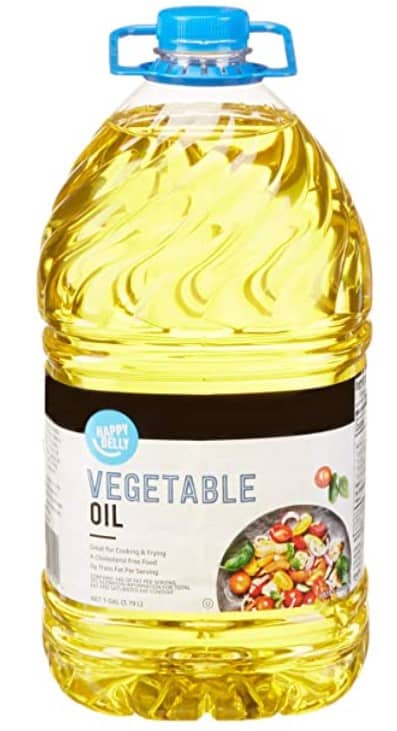
We recommend Happy Belly Vegetable Oil
Canola oil, along with vegetable and blended oils, are very popular. They’re cheap, easily available, and have high smoke points to deal easily with high-temperature cooking.
These highly refined and processed oils are nowhere near as healthy as avocado or grapeseed oil, but this refinement is what makes canola oil so affordable.
Canola, soy, and vegetable oils are better for seasoning than for cooking, particularly the outside of your pan as this will rarely, if ever, come into contact with your food.
5.Olive Oil
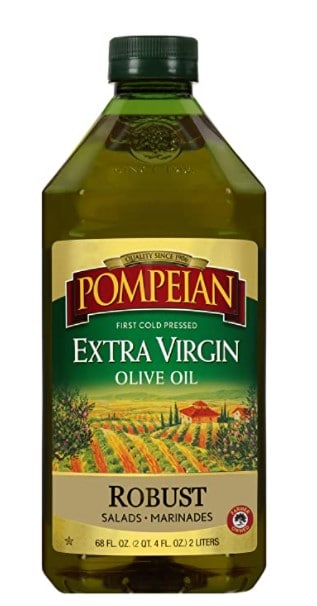
We Recommend Pompeian Robust Extra Virgin Olive Oil
They’ve been eating olive oil in the Mediterranean for millennia for a reason: it’s delicious! Olive oil tastes great, smells better, and it has a myriad of health benefits.
Olive oil is easy to find at the store and it’s relatively inexpensive. You might even have some olive oil in your cupboard right now!
Olive oil’s low smoke point will require you to season your pan at a lower temperature, however. You’ll also want to avoid using high heat when cooking using a pan seasoned with olive oil.
375 degrees Farenheit is the optimal temperature for seasoning a pan with olive oil. One way to ensure the accuracy of this is either use a thermometer or season your pan in the oven! At 375 degrees, your pan will bond with the oil without burning it.
Unfortunately, getting this seasoning wrong prevents your oil from bonding with the iron. It will break off and dissolve at any temperature beyond its smoke point, which can get seriously annoying when all you want is to make dinner!
6.Lard or Tallow

We Recommend Tenderflake Pure Bakers Lard
Really old-school cooks season their cast iron with lard! Before store-bought oil was widespread, lard was the most readily available fat in most households. It will season your pan just as well as any oil, but be warned that lard-seasoned pans require very frequent use.
If you leave a pan seasoned with lard sitting in the cupboard too long, it will turn rancid and stink up your kitchen.
Any pan seasoned with lard or animal fat needs to be used frequently, and stored in an area with good airflow to prevent the fat from spoiling.
7.Coconut Oil
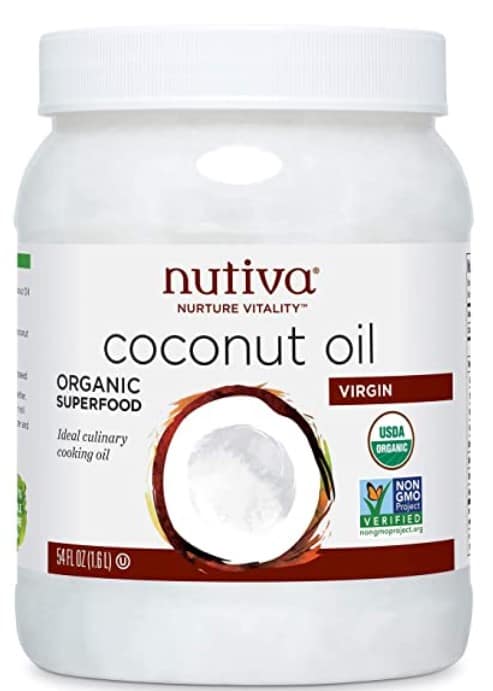
We recommend Nutiva Organic Cold-Pressed Virgin Coconut Oil
Coconut oil has many reported health benefits. You can buy coconut oil in the health food section of many grocery stores.
It has a distinctive aroma and flavor, but if you don’t like coconut you’d be best to steer away from seasoning your cast iron pan with coconut oil. It will imbue anything cooked in the pan with a slight coconut smell.
Coconut oil’s low smoke point, like olive oil’s, means you need to take extra care when seasoning. Coconut oil will need to be seasoned at a lowly 350 degrees Farenheit, and carefully, meticulously buffed. Meet your oil’s smoke point without exceeding it to get the best results.
If the seasoning fails to bond, trying to cook at any temperature above 350 Farenheit will destroy the seasoning.
If you don’t like cooking at high temperatures, you can use coconut oil. <More resilient oils with a higher smoke point are better for those cooks who prefer high heat or don’t want to constantly monitor the heat of their pan.
8.Peanut Oil
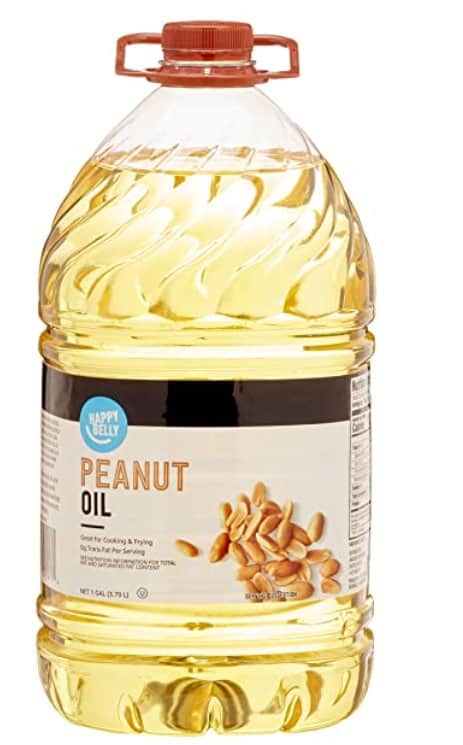
We recommend Happy Belly Peanut Oil
In many ways (except one important one), peanut oil is a staunch middle-of-the-road option for seasoning your cast iron pan.
Peanut oil has a middling smoke point of 450 degrees Farenheit, so it will do a fine job of seasoning your pan. Refined peanut oil is not particularly healthy, but it isn’t terrible for you either. It isn’t exceptionally cheap, but it isn’t the most expensive oil on this list. Refined oils are far cheaper than unrefined ones, too.
However, there is one way in which peanut oil can be extreme. If you ever plan on serving people with a peanut allergy, do not season your pan with peanut oil. Even the miniscule amount that will seep into your food from the pores of your pan can be enough to send allergic individuals to the hospital.
9.Butter or Ghee
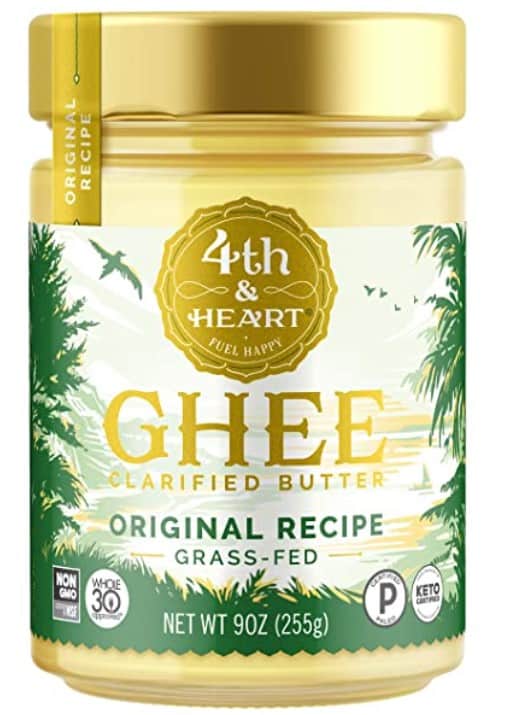
We recommend Original Grass-Fed Ghee by 4th & Heart
You can use butter to season your pan not unlike lard or fat. You’ll want a true, salt-free butter to season your cast iron pan. Anything with salt in it is poor for seasoning a cast iron pan.
Unfortunately if you’re a vegan, butter alternatives won’t work, as their salt content renders them useless for seasoning.
When seasoning with butter, you won’t have as even of a black glossy finish as with other seasoning methods. Ghee, clarified butter, has a far higher smoke point than butter, at 475 degrees F rather than butter’s 300F. The low smoke point of ordinary butter is an issue as with other low smoke points on this list.
With ghee, you can season at a higher temperature, which is great for cooking at a variety of temperatures.
Best Oil For Cast Iron Cooking
Cooking in cast iron is entirely different from seasoning your cast iron. You can use any oil for cooking with cast iron, as heat distributes across the cooking surface evenly.
Be sure not to pour oil straight onto a scorching hot pan, however, as the resulting splash can give you a nasty burn.
How To Season a Cast Iron Grill
Seasoning a grill is slightly different from seasoning a pan. You’ll want to use the heat of your oven rather than that of the grill itself to ensure an even spread of heat and therefore an even finish.
- First, get your oven to 200 degrees Farenheit.
- Warm up the grill. This should take about 15 minutes.
- Remove the grill from the oven using mitts.
- Warm the oven to 450F.
- Coat each grate with your choice of oil using a paper towel or cloth.
- Return the grill to the oven for an hour. Use a high baking temperature to set the oil.
- After an hour, allow the grates to cool.
- Repeat this process at least 5 times.
Seasoning cast iron will take several hours, so it’s best to set aside the afternoon to complete the task. This investment of time early on will ensure that your grill lasts for years to come, and prepares countless quality meals for you and your family.
How To Clean Cast Iron Grill
If your grill is rusty or sticky, you can clean it relatively easily.
For rusted grates without sticky residue, cook them until the rust chars. Scrape the charred rust off the grate.
For sticky, but not rusty, grates, place them in a solution of 1 part vinegar to 4 parts water. This will remove the residue.
Following cleaning (and once the grates have cooled down), be sure to dry them off. Use a paper towel or microfiber cloth.
A quick reseasoning with your choice of oil (preferably the same as you initially seasoned the grill with) will complete this process.
How Often Should I Season Cast Iron?
Cast iron needs to be well seasoned before the first time you use it. After this, regular use will keep the iron seasoned. You don’t actually need to reseason cast iron unless it becomes sticky, the seasoning comes off, or it develops rust.
Best Oil For Cleaning Carbon Steel
Carbon steel may come pre-seasoned but you should always season it yourself before the first use, just to be on the safe side.
Flaxseed and canola oil are commonly used to season carbon steel. Any of the oils we recommended in the list above should work well for you.
How to Season A Rusty Cast Iron Dutch Oven
Cast iron Dutch ovens are often subjected to more arduous environments and less frequent use than typical cast iron pans. As a result, they’re more prone to rust and residue.
Always use a resilient oil that won’t go rancid for a Dutch oven. Lard, seed oils, or butter will impart odor and taste to an infrequently used Dutch oven. However, the more resilient oils from our list should work just fine.
More Reviews
10 best spices for chicken soup
5 Best mozzarella cheese shredders



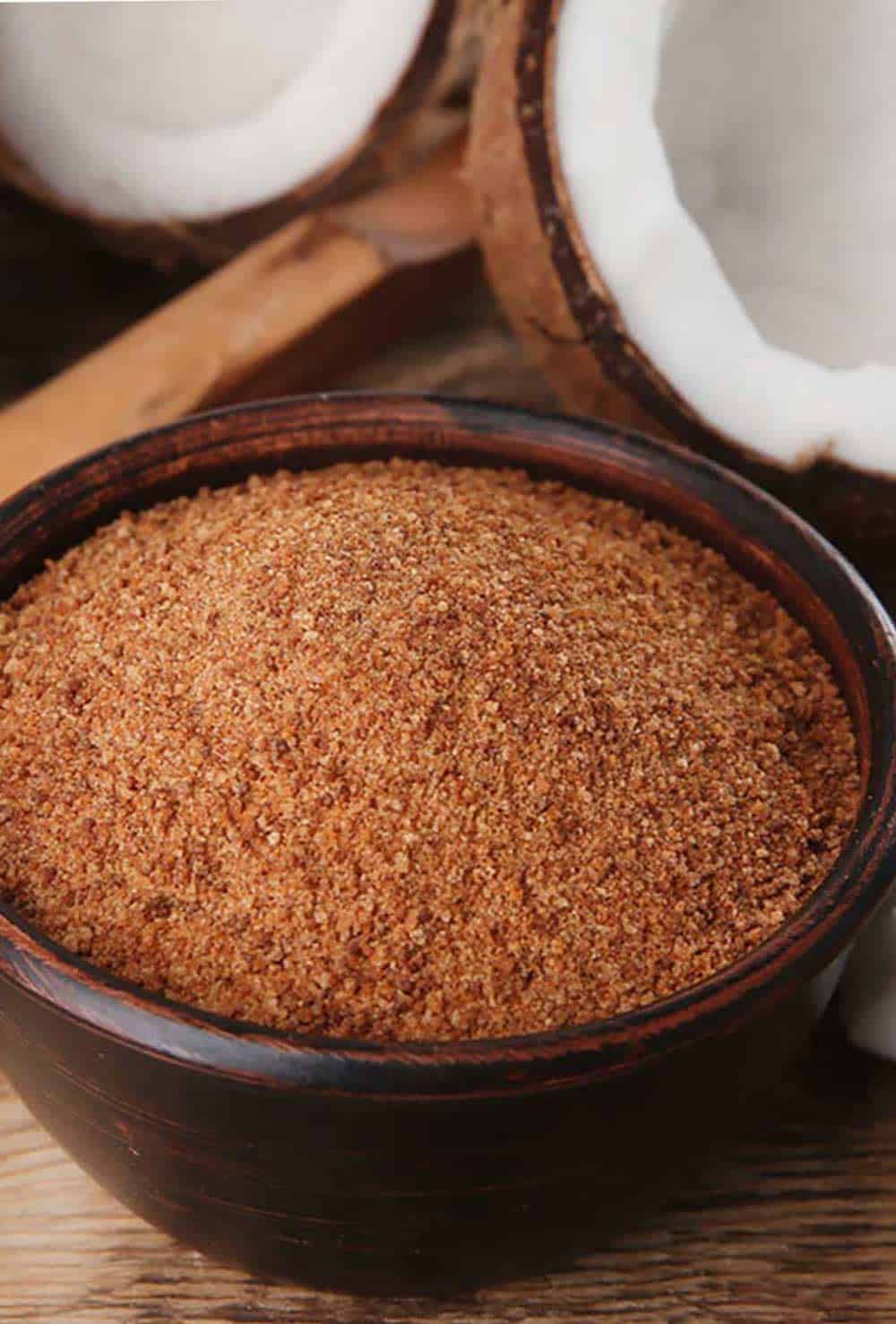
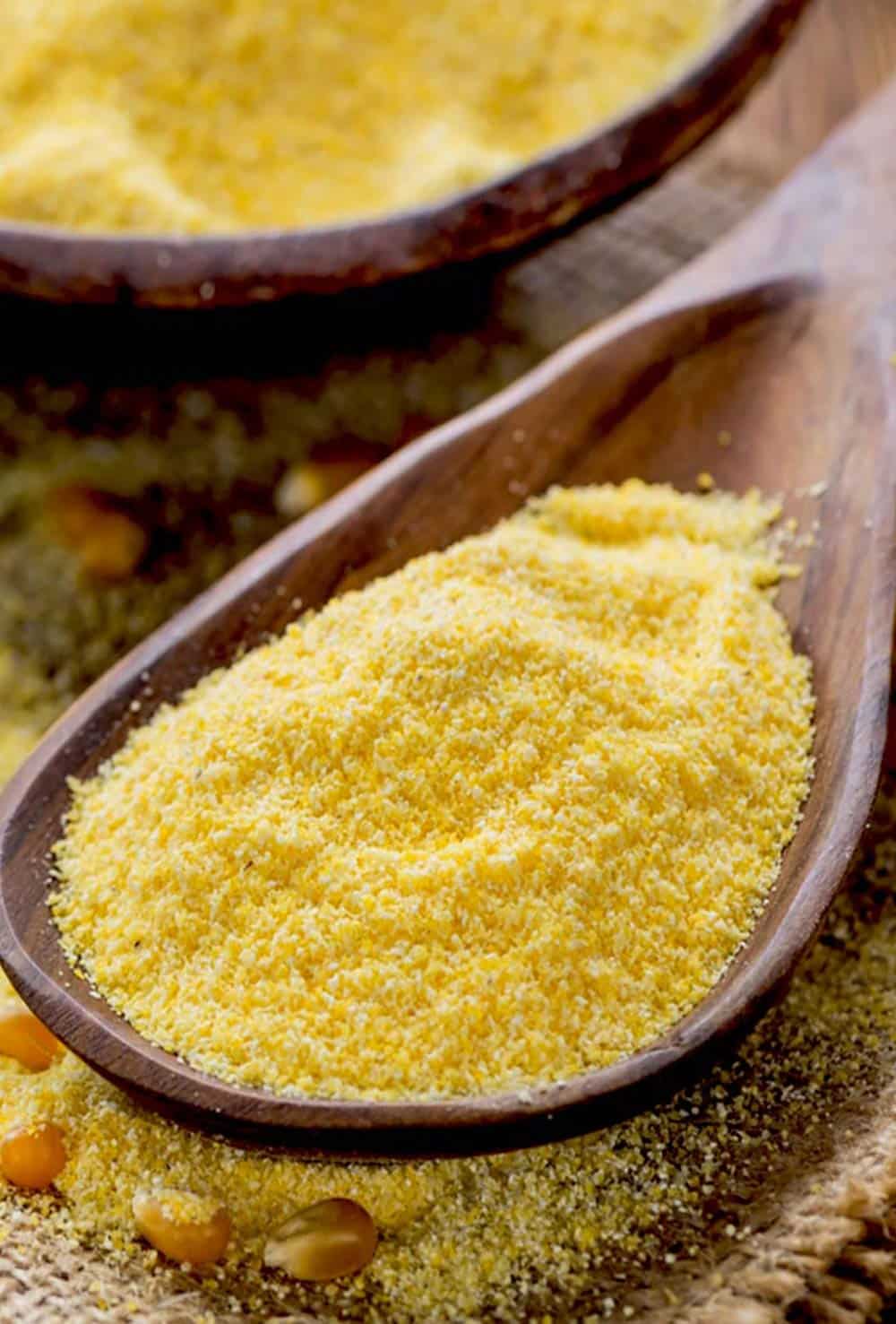
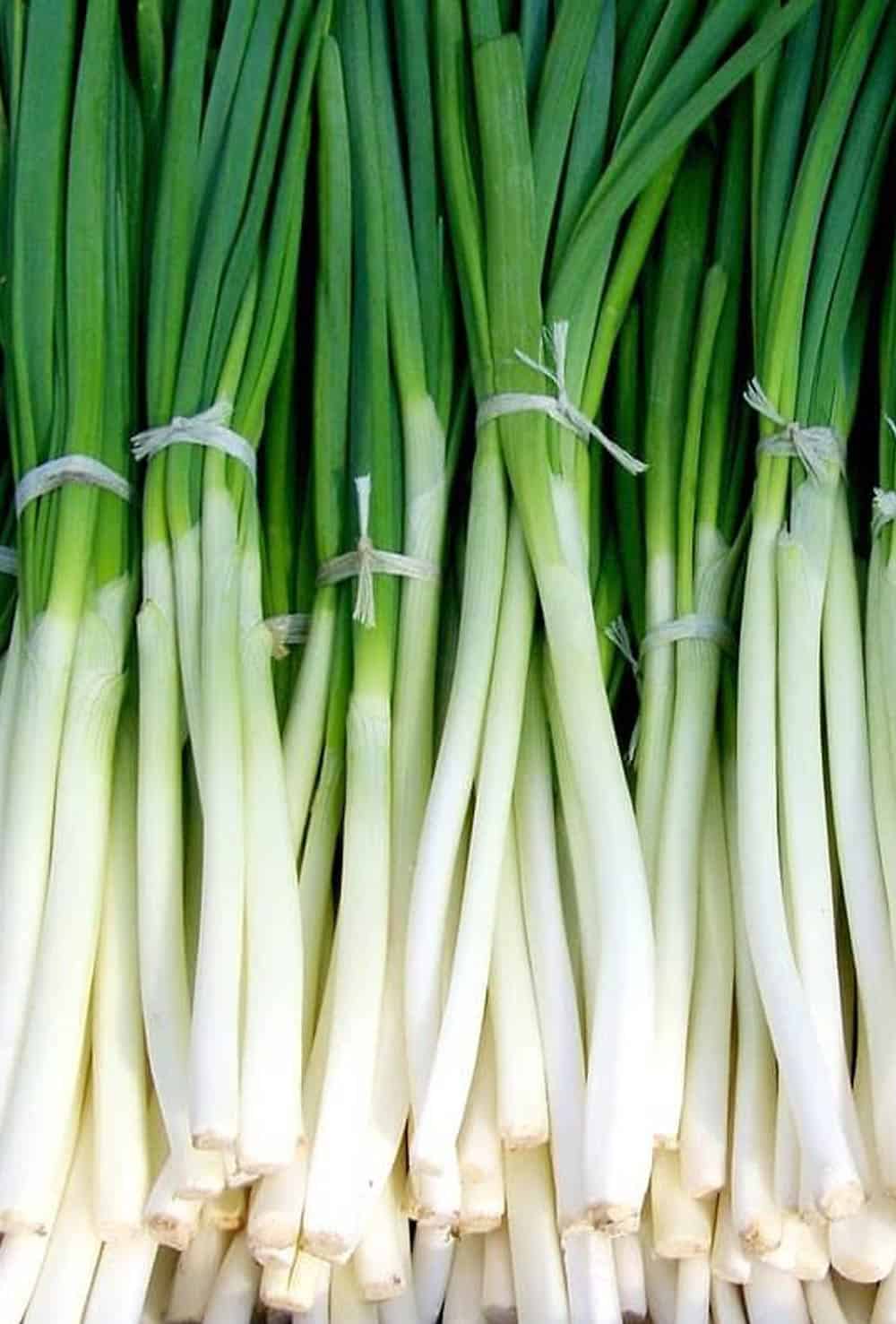
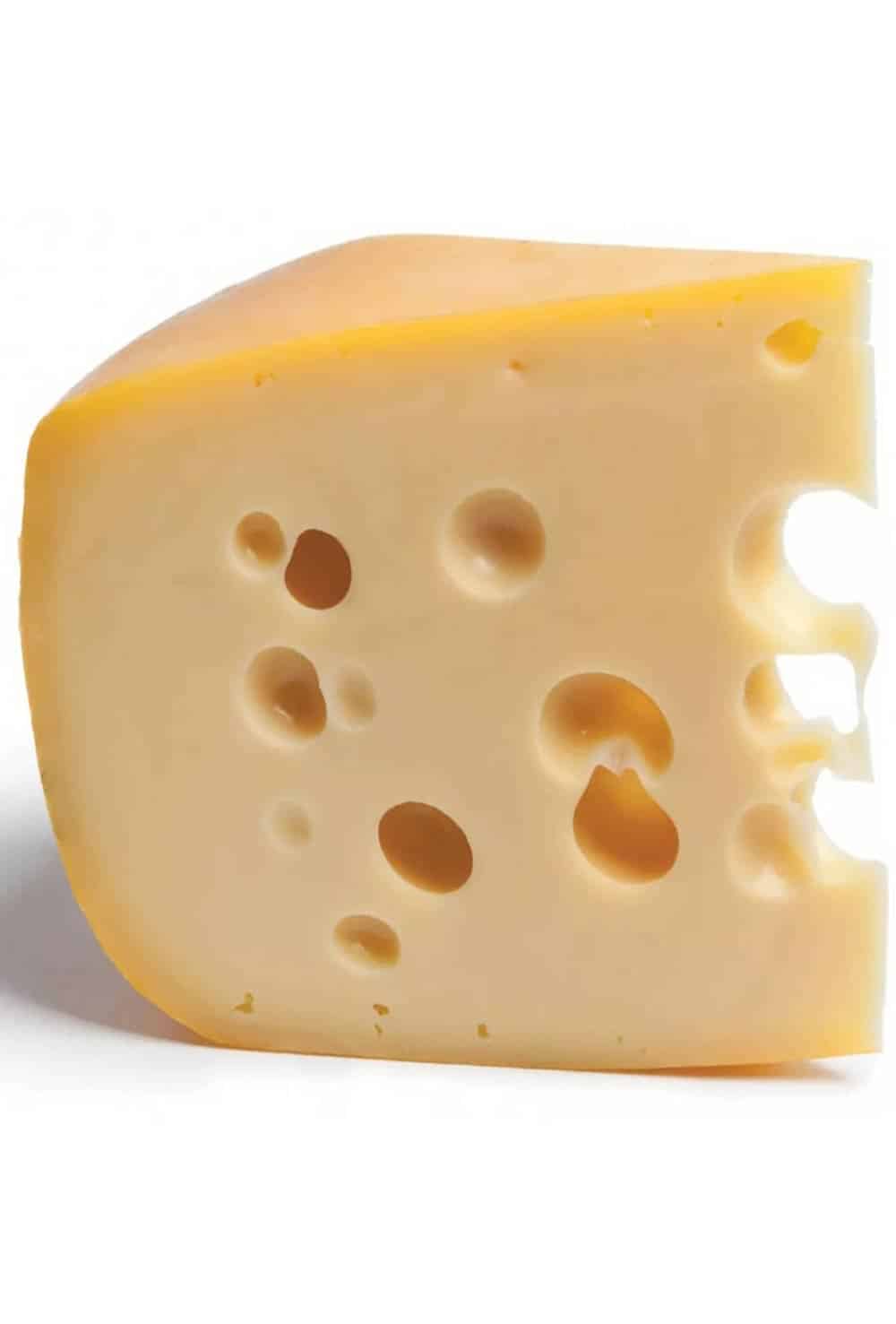
Leave a Reply